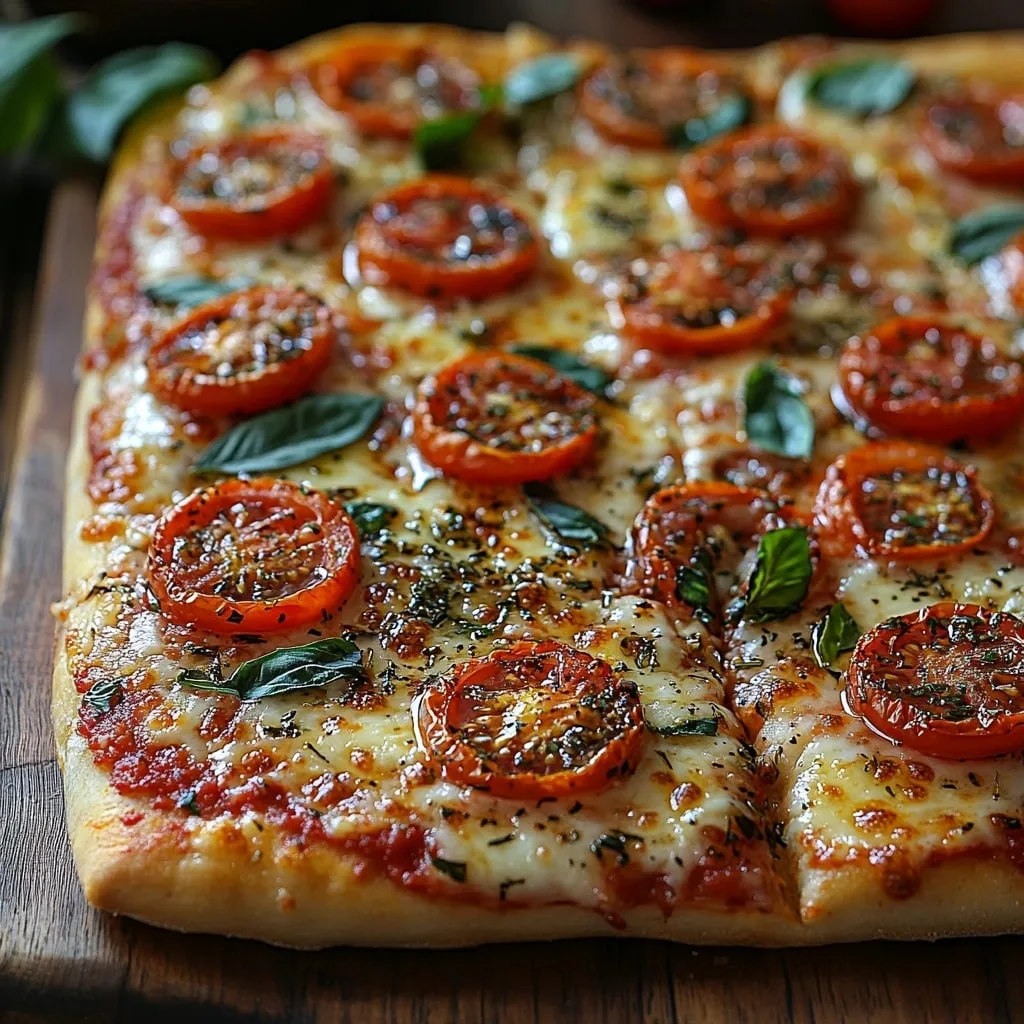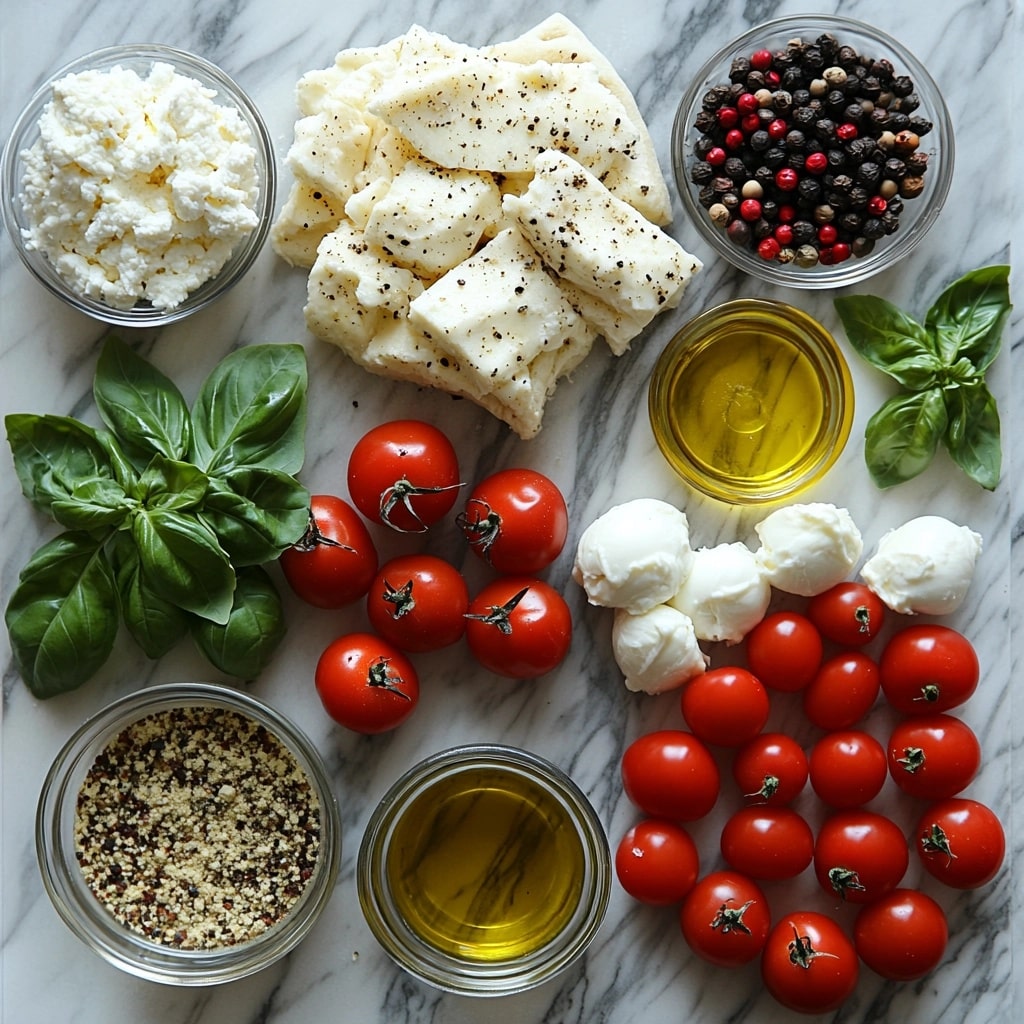If there’s one thing that makes weeknight dinners a breeze and still feel like a treat, it’s no knead focaccia pizza. This recipe combines the rich, airy texture of focaccia bread with the beloved toppings of a classic pizza, all without the hassle of traditional dough kneading. In this article, we’ll dive into why this hybrid is a game-changer for home cooks, how to make it from scratch, and what makes it stand apart from your usual pie. From story to technique, you’ll get everything you need to master this no-fuss delight.
Why I Fell in Love with No Knead Focaccia Pizza
The first time I tried no knead focaccia pizza was a complete accident—and one of the happiest ones to ever come out of my kitchen. I had planned to make my usual focaccia for a weekend family lunch, but my niece had her heart set on pizza. With no time (or energy) to knead a proper dough, I took a chance on my favorite no knead focaccia recipe, shaping it into a pizza instead. What came out of the oven was a chewy, golden, olive oil-kissed crust that held its toppings like a dream. Everyone loved it—especially me.
Back in my childhood kitchen, we never worried about “authentic” methods. My grandma believed that good food didn’t need fancy steps—just love, good ingredients, and a little patience. That’s what makes no knead focaccia pizza so special. It captures all the spirit of those bustling Sunday dinners—the crackling edges, the deep flavor, the aroma that wrapped the house in comfort—without the stress. It’s simple enough for a weeknight and rich enough to impress your guests. And you don’t need a stand mixer, a dough hook, or even elbow grease—just a bowl, a spoon, and time.
If you’ve ever felt intimidated by pizza dough, this is your perfect gateway. It’s forgiving, flavorful, and fantastically easy. You’ll find yourself skipping store-bought crusts once you realize how effortlessly delicious this can be.

No Knead Focaccia Pizza
Ingredients
Method
- In a large bowl, combine flour, kosher salt, instant yeast, olive oil, and lukewarm water. Mix with a wooden spoon until flour is fully hydrated. Dough should be shaggy but not sloppy.
- Drizzle olive oil over the top of the dough, cover the bowl with plastic wrap or a tight lid, and refrigerate for at least 18 hours.
- Remove dough from fridge 2 hours before baking. Deflate slightly and transfer to a buttered and oiled 9×13 baking tray or large sheet pan.
- Fold dough over itself like a letter, flip seam-side down, and cover with a towel. Let rise in a warm place for 1.5 to 2 hours.
- Preheat oven to 425°F (220°C). If dough hasn’t fully reached edges, gently stretch to corners. Drizzle with olive oil and dimple the surface with your fingers.
- Top with marinara sauce, shredded mozzarella, grated parmesan, and pepperoni slices.
- Bake for 20-25 minutes until golden brown. Garnish with sea salt, more parmesan, basil, and hot honey if desired.
Notes
What Makes No Knead Focaccia Pizza Different?
When you hear “pizza,” your mind probably jumps to a thin crust with chewy edges—or maybe a deep dish layered like a lasagna. But no knead focaccia pizza sits in its own delicious category. It’s the meeting point between bread and pie: thick and springy with a crispy base, airy crumb, and deep olive oil flavor. That rich texture comes from the focaccia method, where the dough is high in hydration and allowed to ferment slowly without kneading. The result is not just a base—it’s a major part of the meal’s flavor.
Focaccia dough, unlike traditional pizza dough, uses more water and often a longer rest period. This slow rise gives it complexity and an open, bubbly structure. With no knead focaccia pizza, you get that pillowy base and crusty bottom that soaks in olive oil and holds toppings beautifully. It’s less about the quick crunch and more about rich flavor and depth.
Whereas classic pizza dough requires folding, stretching, and careful timing, the no knead version practically takes care of itself. You mix it with a spoon, let time do the work, and pour it onto a pan when ready. It’s a smart, modern answer to homemade pizza that doesn’t cut corners—it just skips the tiring ones.
You’ll also notice the taste is bolder, thanks to the extended fermentation and olive oil, both of which develop more flavor than a rushed dough ever could. That’s why it pairs perfectly with robust toppings like roasted garlic, sun-dried tomatoes, or spicy sausage.

How to Make No Knead Focaccia Pizza
Making no knead focaccia pizza is the kind of satisfying kitchen project that doesn’t feel like work. All you need is a large bowl, a baking pan, and a bit of patience. Start with flour, instant yeast, salt, warm water, and good olive oil. Stir everything together with a spoon until you get a shaggy, sticky dough—no kneading required. Cover it, set it aside, and let time work its magic. A slow, room-temperature rise of 12 to 18 hours develops flavor and a soft, stretchy texture.
Once your dough is bubbly and doubled in size, it’s ready for the pan. Generously oil a baking sheet or cast iron pan and gently pour in the dough. Stretch it lightly with oiled fingers to fit, being careful not to deflate those beautiful air pockets. Cover again for a second short rise—about 30 to 45 minutes—while you preheat the oven to 450°F.
Now it’s time to dress it up. The joy of no knead focaccia pizza is how well it holds toppings. Whether you’re craving melty mozzarella and crushed tomatoes or something bolder like caramelized onions and goat cheese, the dough will rise to the occasion—literally. Drizzle a bit more olive oil on top before baking to get that golden, crispy edge.
Slide the pan into your hot oven and bake for 20–25 minutes until puffed, golden, and sizzling. Cool slightly before slicing to let the crust set.
Need more visuals? Try browsing our facebook page for similar methods with step-by-step clarity.
Toppings, Tips & Troubleshooting
Toppings are where no knead focaccia pizza truly shines. Thanks to its sturdy, plush crust, this pizza can handle just about anything. Think layers of roasted vegetables, dollops of ricotta, fresh herbs, or even a drizzle of hot honey post-bake. The thick base holds juicy or heavy ingredients without going soggy, making it perfect for creative combinations. Try roasted butternut squash with sage, spicy salami with chili oil, or the classic combo of tomato, mozzarella, and basil. The crust is flavorful enough to complement bold toppings but neutral enough to let them shine.
Here’s a tip: don’t overload the dough. While it can handle more than a thin crust, too much topping can prevent proper baking. Stick to a balanced layer and keep moisture in check. Always use pre-cooked or roasted veggies to avoid water-logged results. Cheese lovers can mix mozzarella with a sharper cheese like provolone or pecorino for more bite.
Running into trouble? If your dough isn’t rising, make sure your yeast is fresh and your environment isn’t too cold. A warm kitchen corner or even the oven with the light on can help. If your pizza is too dense, it likely didn’t ferment long enough—aim for that overnight rise to build the right texture.
For soggy bottoms, preheat your pan for a few minutes before adding the dough, or bake in a cast iron skillet for maximum heat retention. Don’t skip the olive oil—it’s what gives focaccia its signature crispy edge.
Craving more bread-based creations? You’ll love our Souplantation Focaccia Pizza Recipe.
FAQs
Can you use no knead bread dough for pizza?
Yes, you can! No knead bread dough, especially those with high hydration like focaccia, works wonderfully for pizza. It creates a chewy, airy crust that’s deeply flavorful and beautifully golden when baked. Just make sure to let it rise fully and use plenty of olive oil to get that signature crisp base.
Can I use focaccia dough for pizza?
Absolutely. Focaccia dough is a fantastic base for pizza—especially when you’re looking for a thicker, more pillowy crust. It holds toppings well and doesn’t require shaping skills. The olive oil-rich dough adds both moisture and flavor, making each slice rich and satisfying.
Is focaccia dough different than pizza dough?
Focaccia dough tends to have more hydration and often includes more olive oil than traditional pizza dough. It’s designed to be airy and thick, while pizza dough is usually firmer and meant for stretching thin. But both share similar base ingredients—flour, yeast, salt, water—so with small tweaks, they’re interchangeable.
Are you supposed to knead focaccia?
Traditionally, focaccia is kneaded lightly, but the no knead version skips this entirely. Time replaces effort—the extended fermentation allows the gluten to develop naturally, giving you a beautifully textured dough without any handwork. Just mix, rest, and enjoy the results.
Conclusion
No knead focaccia pizza brings together the best of both worlds: the ease of a no-fuss dough and the indulgent flavor of homemade pizza. It’s simple enough for busy weeknights and special enough for weekend gatherings. With just a bowl, a little patience, and a splash of olive oil, you can create a pizza that rivals any pizzeria pie—without the stress. Whether you’re topping it with classics or getting bold with flavors, this is a recipe you’ll turn to again and again.

